24 Hour Military to Standard Time Converter
Convert Military to Standard Time
Found our Free 24 Hour Military to Standard Time Converter useful? Bookmark and share it.
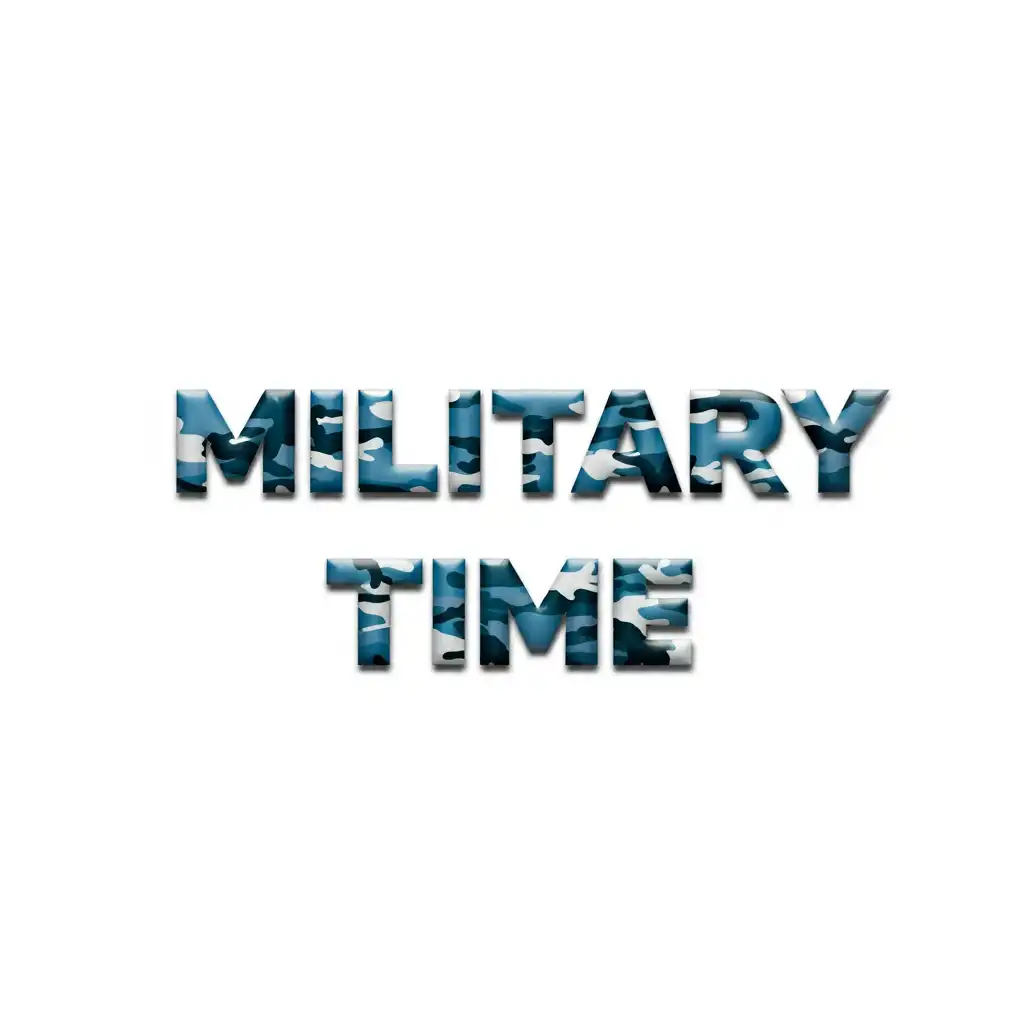
How to Use the 24-Hour Military Time Converter
Our 24-hour military time converter allows you to easily switch between standard (12-hour) and military (24-hour) time formats. Follow the steps below to quickly convert and understand both time formats.
Using the Converter:
Set the Time:
- Use the dropdown wheels in the Standard Time section to select the desired hour and minute, then choose “AM” or “PM” from the period dropdown.
- As you adjust the time, the corresponding Military Time in the 24-hour format will automatically update.
Converting from Military to Standard Time:
- You can also adjust the hour and minute dropdowns in the Military Time section.
- The Standard Time section will update in real time, showing the converted time in the 12-hour format with “AM” or “PM” specified.
Resetting the Time:
- Click the Reset button to instantly return the converter to the current local time. This feature is helpful for setting a new starting point or quickly returning to the present time.
Understanding Military and Standard Time:
- Military Time (24-Hour Format): Commonly used in the military, aviation, and other fields that require a 24-hour clock to avoid ambiguity, military time runs from 00:00 (midnight) to 23:59.
- Standard Time (12-Hour Format): Used in everyday civilian settings, this format uses “AM” and “PM” to distinguish morning and evening times, with 12:00 being noon and midnight.
What is Military Time?
Military time is a timekeeping system that uses a 24-hour clock to represent each hour of the day in a continuous sequence from 0000 to 2359, without using AM or PM designations. Unlike the standard 12-hour clock, which resets twice a day (from 12:00 AM to 11:59 AM, then from 12:00 PM to 11:59 PM), military time follows a single cycle from midnight to midnight. This format eliminates the need for AM/PM markers, making it clearer and reducing the chances of errors in settings where precise time communication is critical.
How Military Time Differs from Standard Time
In standard (12-hour) time, the day is divided into two 12-hour segments. For instance, 2:00 can refer to either 2:00 AM (morning) or 2:00 PM (afternoon), requiring an additional AM or PM label to specify the time accurately. In contrast, military time uses a four-digit, 24-hour format. The first two digits represent the hour, while the last two digits represent the minutes. For example:
- 2:00 AM in standard time converts to 0200 in military time.
- 2:00 PM in standard time converts to 1400 in military time.
By using a four-digit format and continuing the count after noon, military time removes the ambiguity associated with AM/PM labels.
Understanding the 24-Hour Clock System
The 24-hour clock system, which is the basis of military time, organizes the day from 0000 (midnight) to 2359 (11:59 PM). Here’s a breakdown:
- Midnight (12:00 AM) is written as 0000 or 2400 in military time.
- Noon (12:00 PM) is represented as 1200.
- From 1:00 PM onward, hours increment sequentially: 1300 (1:00 PM), 1400 (2:00 PM), continuing up to 2300 (11:00 PM).
In this system, each hour only occurs once per day, eliminating confusion when referencing a specific time, especially in environments like aviation, hospitals, and the military, where mistakes in timing could have serious consequences.
Why is it Called "Military" Time?
The term “military time” is derived from the fact that this 24-hour clock system is commonly used by armed forces worldwide, including the U.S. military. Precision and clarity in timekeeping are essential in military operations, where misunderstanding a time order can lead to critical errors. By using military time, soldiers and personnel avoid the potential mix-up between morning and evening hours, ensuring that all operations and communications are unambiguous.

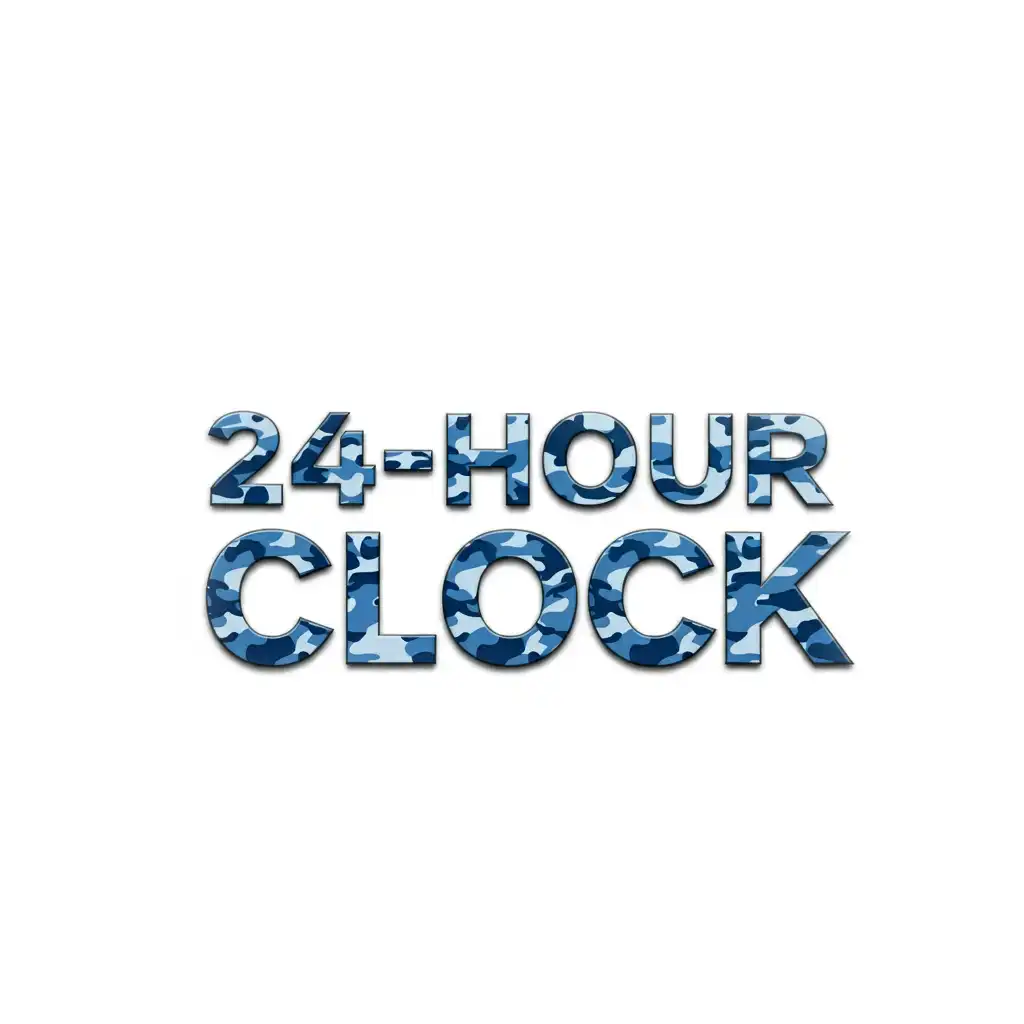
Understanding the 24-Hour Clock System
The 24-hour clock, often referred to as military time, is a straightforward system where each hour of the day is uniquely numbered from 0000 (midnight) to 2359 (11:59 PM). Unlike the standard 12-hour format, which requires AM and PM to differentiate morning and afternoon times, the 24-hour clock uses a continuous sequence, eliminating the possibility of time-related misunderstandings. Here’s a deeper look at how this system works:
How the 24-Hour Clock Works
In the 24-hour clock system:
- The day begins at 0000 (often called “zero hundred hours”), representing midnight.
- Each hour progresses in a single continuous sequence, adding an hour as the day advances.
- Hours range from 0000 to 2359, covering the full span of the day and night.
The first two digits indicate the hour, while the last two digits represent the minutes. Minutes range from 00 to 59, much like in the 12-hour system. For example, 1:00 AM is written as 0100, 10:30 AM as 1030, 3:45 PM as 1545, and so on.
Examples:
- 0000 – Midnight (12:00 AM in standard time)
- 0100 – 1:00 AM
- 1200 – Noon (12:00 PM)
- 2359 – 11:59 PM
Numbering from 0000 to 2359
The 24-hour format starts at midnight, denoted as 0000, and progresses hour by hour:
- From 0000 to 1159, the hours represent the morning (AM) in standard time.
- After 1200 (noon), the hours continue as 1300 (1:00 PM), 1400 (2:00 PM), up to 2359.
In this system:
- 0000-1159 covers the 12 hours from midnight to noon.
- 1200-2359 covers the 12 hours from noon to just before midnight.
To convert from military time to standard time, you subtract 12 from any hour greater than 1200. For instance, 1400 becomes 2:00 PM in standard time, while times under 1200 remain as is, simply adding AM.
Example Conversions:
- 1300 – 1:00 PM
- 1500 – 3:00 PM
- 2200 – 10:00 PM
Absence of AM and PM Designations
One of the main distinctions of military time is its lack of AM and PM designations, which are essential in standard time to differentiate morning and afternoon hours. This lack of AM/PM markers is crucial for preventing misunderstandings and ensuring clarity, particularly in fields where exact timing is essential.
For instance, in military or aviation contexts, instructions to complete a task at “0800 hours” unmistakably point to 8:00 in the morning. Similarly, “1800 hours” clearly refers to 6:00 in the evening, removing any potential confusion that might arise from similar times under the 12-hour format.
Military Time Conversion Chart
Below is a comprehensive chart that converts each hour of standard (12-hour) time to military (24-hour) time, along with the common pronunciation used, especially in military and aviation settings. This chart covers both AM and PM hours, offering a clear reference for converting any time within a day.
| Standard Time (12-hour clock) | Military Time (24-hour clock) | Pronunciation |
|---|---|---|
| 12:00 AM | 0000 | "Zero Hundred Hours" |
| 1:00 AM | 0100 | "Zero One Hundred Hours" |
| 2:00 AM | 0200 | "Zero Two Hundred Hours" |
| 3:00 AM | 0300 | "Zero Three Hundred Hours" |
| 4:00 AM | 0400 | "Zero Four Hundred Hours" |
| 5:00 AM | 0500 | "Zero Five Hundred Hours" |
| 6:00 AM | 0600 | "Zero Six Hundred Hours" |
| 7:00 AM | 0700 | "Zero Seven Hundred Hours" |
| 8:00 AM | 0800 | "Zero Eight Hundred Hours" |
| 9:00 AM | 0900 | "Zero Nine Hundred Hours" |
| 10:00 AM | 1000 | "Ten Hundred Hours" |
| 11:00 AM | 1100 | "Eleven Hundred Hours" |
| 12:00 PM | 1200 | "Twelve Hundred Hours" |
| 1:00 PM | 1300 | "Thirteen Hundred Hours" |
| 2:00 PM | 1400 | "Fourteen Hundred Hours" |
| 3:00 PM | 1500 | "Fifteen Hundred Hours" |
| 4:00 PM | 1600 | "Sixteen Hundred Hours" |
| 5:00 PM | 1700 | "Seventeen Hundred Hours" |
| 6:00 PM | 1800 | "Eighteen Hundred Hours" |
| 7:00 PM | 1900 | "Nineteen Hundred Hours" |
| 8:00 PM | 2000 | "Twenty Hundred Hours" |
| 9:00 PM | 2100 | "Twenty-One Hundred Hours" |
| 10:00 PM | 2200 | "Twenty-Two Hundred Hours" |
| 11:00 PM | 2300 | "Twenty-Three Hundred Hours" |
| 12:00 AM | 2400 | "Twenty-Four Hundred Hours" |
Explanation of Pronunciation
The pronunciation of military time is simple:
- Zero is used for hours between 0000 and 0900 (e.g., “Zero Eight Hundred” for 0800).
- For hours after 1200, pronounce the number as a single term: “Fourteen Hundred” for 1400 (2:00 PM).
- Midnight can be expressed as either 0000 (beginning of the day) or 2400 (end of the day), both pronounced as “Zero Hundred” or “Twenty-Four Hundred.”
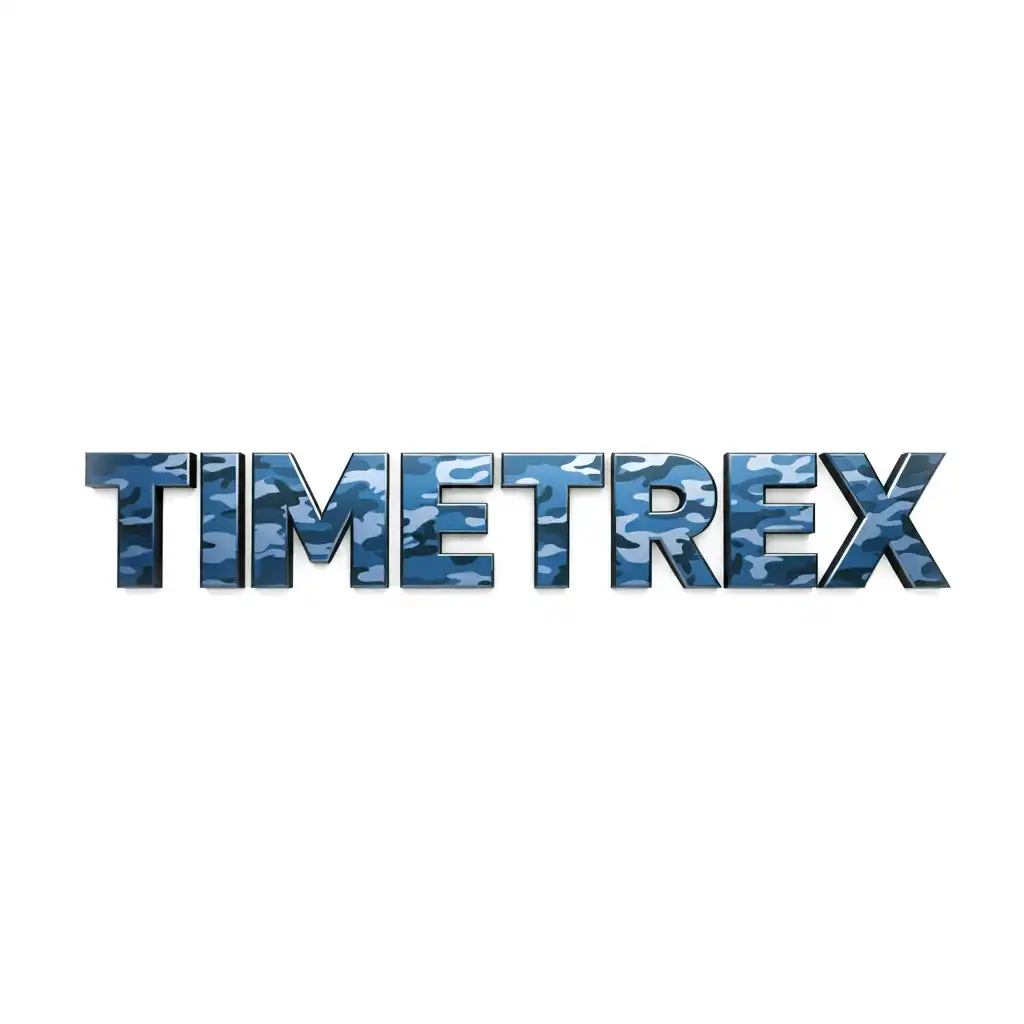
How to Convert Standard Time to Military Time
Converting standard 12-hour time (AM/PM) to military time (24-hour) can be straightforward once you understand a few key rules. Military time eliminates AM and PM markers and uses a continuous 24-hour format, with each hour of the day uniquely represented.
Step-by-Step Guide
Step 1: Remove the Colon (if Necessary) for Military Time Format
- Military time often omits the colon used in standard time format, especially in more formal or operational settings. For example, while standard time displays “2:30 PM,” military time would display this as “1430,” omitting the colon.
Step 2: Add 12 to the Hour if the Time is PM (Excluding 12 PM)
- For any time in the PM (afternoon or evening), add 12 to the hour to convert it to military time. This only applies to hours from 1:00 PM to 11:59 PM, as 12:00 PM is represented as 1200 in military time.
- Example: 2:00 PM becomes 1400 (2 + 12 = 14), while 12:00 PM remains 1200.
Step 3: For Times Between 1 AM and 9 AM, Add a Leading Zero
- To ensure all hours are represented by two digits in military time, add a leading zero to any hour from 1:00 AM to 9:59 AM. This keeps the military time format consistent and avoids ambiguity.
- Example: 7:30 AM becomes 0730.
Step 4: Examples Illustrating the Conversion
- Below are two examples showing the conversion of both AM and PM times to military format.
Examples
Example 1: Convert 2:30 PM to Military Time
- Step 1: Begin with the standard time: 2:30 PM.
- Step 2: Since it’s in the PM, add 12 to the hour: 2 + 12 = 14.
- Step 3: The result is 1430 hours in military time (removing the colon).
- Answer: 2:30 PM converts to 1430 hours.
Example 2: Convert 7:45 AM to Military Time
- Step 1: Begin with the standard time: 7:45 AM.
- Step 2: Since it’s in the AM, no need to add 12 to the hour.
- Step 3: Add a leading zero to the hour (as it’s between 1 and 9 AM).
- Answer: 7:45 AM converts to 0745 hours.
How to Convert Military Time to Standard Time
Converting military (24-hour) time back to standard (12-hour) time is a simple process that involves distinguishing between AM and PM hours and making a few adjustments to format the time correctly. Follow these steps to easily convert any military time to standard time with AM or PM designations.
Step-by-Step Guide
Step 1: Check if the Time is Greater than 1200 Hours
- The time format in military time ranges from 0000 to 2359. If the time is greater than 1200, it represents a PM hour in standard time. If it’s 1200 or less, it represents an AM hour.
- For instance, 1530 is a PM hour, while 0800 is an AM hour.
Step 2: Subtract 12 from the Hour Component if Time is Greater than 1200
- For times greater than 1200 (1:00 PM or later), subtract 12 from the hour component to convert it to the correct hour in standard time.
- For example, 1530 becomes 3:30 after subtracting 12 from 15.
Step 3: Add AM or PM Designation
- If the time is 1200 or less, add “AM” to indicate morning hours.
- If the time is greater than 1200, add “PM” to indicate afternoon/evening hours.
Step 4: Insert Colon to Separate Hours and Minutes
- Standard time requires a colon between the hours and minutes for clarity. Place a colon between the hour and minute components of the time.
- Example: Convert 1530 to 3:30 PM by inserting a colon.
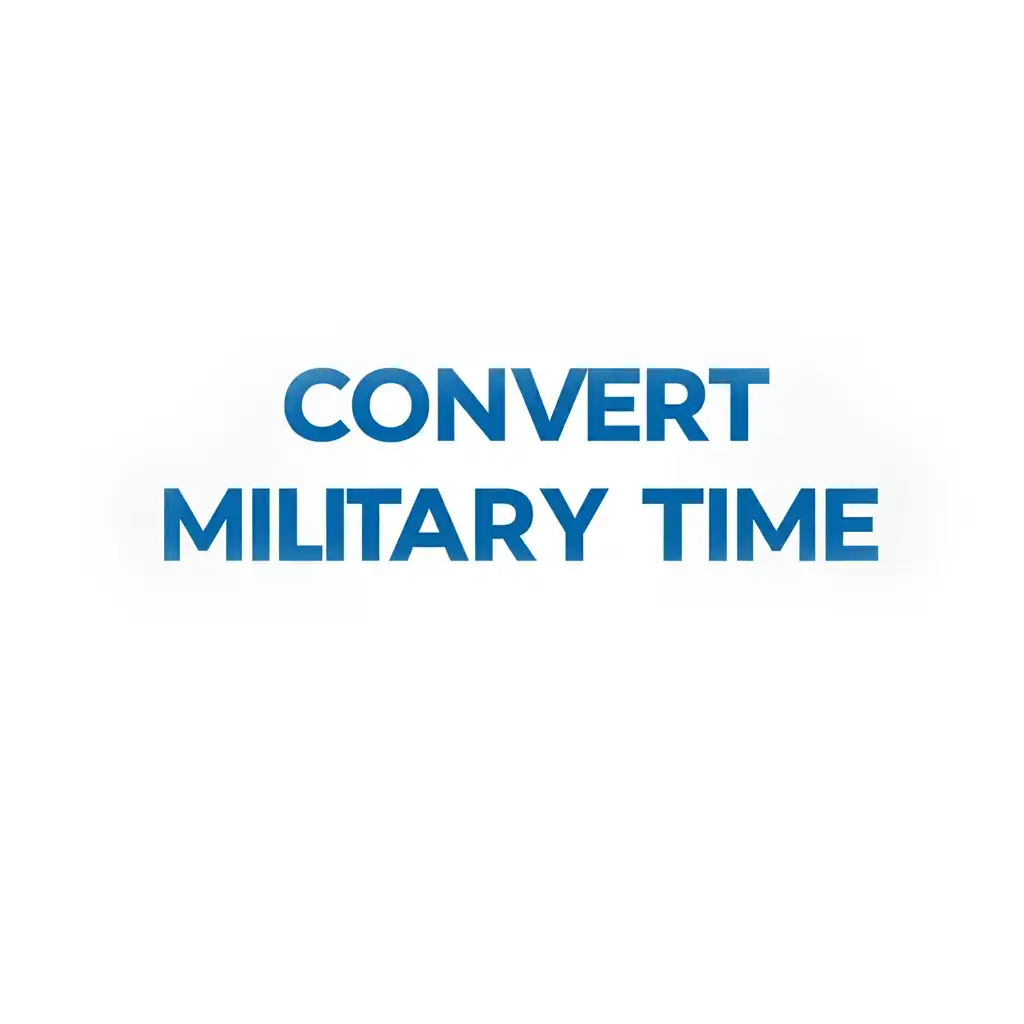
Common Uses of Military Time
Military time is widely adopted in various industries and scenarios where clarity, precision, and the elimination of AM/PM confusion are essential. This format ensures that time is communicated unambiguously, which is particularly important in fields where split-second timing can make a difference. Here’s a look at some of the key industries and situations that rely on military time.
Military and Defense
Military time originated within the armed forces, where it’s essential to avoid misunderstandings that could lead to critical errors. Operations in the military are frequently time-sensitive, and using a 24-hour clock standardizes time across all branches, allowing personnel to communicate seamlessly. Military time ensures there’s no room for confusion between AM and PM, especially in environments where personnel may be deployed across different time zones. Orders, mission times, and logistical planning all use military time to keep operations running smoothly.
Aviation and Maritime
In aviation and maritime industries, accuracy in timekeeping is vital. Both sectors use military time as the international standard to avoid miscommunication across different time zones and regions. Air traffic control, flight schedules, and crew shifts all operate on a 24-hour clock, which allows airlines, pilots, and maritime crews to communicate precise times. Military time helps coordinate flight departures and arrivals, avoiding any potential confusion that could arise from AM/PM errors, particularly in international travel where flights and voyages cross multiple time zones.
Healthcare (Hospitals and Medical Records)
In healthcare, particularly in hospitals, accurate timekeeping can impact patient care and treatment outcomes. Hospitals use military time to record patient treatments, medication administration, and surgery times to eliminate the risk of errors that could result from confusion between AM and PM. For instance, a medication scheduled for 0800 (8:00 AM) is clearly distinct from a dose at 2000 (8:00 PM), ensuring that there’s no ambiguity. Medical records, shift schedules, and emergency response times all use military time, helping healthcare professionals stay consistent and clear in their documentation and communication.
Emergency Services
Emergency services—such as police, fire departments, and paramedics—depend on precise timekeeping in their reporting and response efforts. Using military time ensures that all parties involved in emergency response can quickly interpret the exact time of an event without needing additional clarification. Dispatch logs, incident reports, and shift changes in these services are documented in military time, facilitating accurate record-keeping and avoiding any potential confusion that could arise from AM/PM distinctions, especially in situations requiring immediate response.
International Business and Travel
Global businesses and travelers frequently use military time, particularly when coordinating across time zones. International meetings, flights, and reservations are often scheduled using a 24-hour clock to standardize communication and avoid confusion. For example, if a business schedules a virtual meeting at 1500 hours (3:00 PM), it’s clear to all participants regardless of their time zone, minimizing the risk of scheduling conflicts. Hotels, car rentals, and international transportation services also use military time to provide customers with consistent and precise scheduling.
Benefits of Using Military Time
Military time provides clear advantages in settings where precision and clarity in timekeeping are essential. By eliminating potential misunderstandings associated with standard 12-hour time, military time helps organizations and individuals maintain efficiency and accuracy. Here are some of the primary benefits of using military time.
Elimination of AM/PM Confusion
One of the most significant advantages of military time is the removal of AM/PM ambiguity. In standard time, each hour appears twice in a 24-hour period, once in the morning (AM) and once in the evening (PM), which can lead to misunderstandings. Military time solves this issue by representing each hour uniquely within the 24-hour day, with no need for AM or PM. This is especially valuable in high-stakes environments, such as healthcare and military operations, where clarity in timing can impact outcomes. For example, “0800” unambiguously means 8:00 in the morning, while “2000” means 8:00 in the evening—both times are instantly recognizable without needing further clarification.
Reduction of Errors in Time-Sensitive Operations
In fields where timing accuracy can make a significant difference—such as emergency response, aviation, and medicine—military time reduces the likelihood of errors that could result from misinterpreting AM and PM designations. Military time ensures that every event, from a medication dose to an aircraft departure, is documented and communicated precisely. For instance, an emergency surgery scheduled for 1500 hours (3:00 PM) is clearly different from one at 0300 hours (3:00 AM), allowing healthcare providers to avoid dangerous mistakes. The use of military time standardizes these operations, reducing potential mishaps and improving overall efficiency in environments where every second counts.
Universality and Standardization in Global Communications
Military time offers a standardized way of expressing time that’s universally understood, making it ideal for international communications and operations. In our globalized world, military time provides a consistent reference, removing regional differences in AM/PM usage and ensuring that individuals from diverse backgrounds can interpret time the same way. This standardization is particularly useful in aviation, international business, and online meetings, where participants from various time zones must coordinate. Military time also allows for straightforward conversion across time zones, ensuring clear communication no matter the geographic location, and helping prevent scheduling conflicts or misunderstandings.

Tips for Remembering Military Time
Learning to quickly interpret and convert between military and standard time can be useful in various professional and everyday situations. Here are some effective tips and tricks to help you remember military time effortlessly.
Tricks to Quickly Convert Between Standard and Military Time
For Morning Hours (1 AM to 11 AM): Military time for morning hours (0000 to 1159) corresponds directly with standard time. Simply add a leading zero to any hour before 10:00 AM to ensure a two-digit format (e.g., 9:00 AM becomes 0900).
For Noon and Afternoon Hours (12 PM to 11:59 PM): For times from 1:00 PM onward, add 12 to the hour. This trick helps you instantly convert PM times to military time.
- Example: To convert 2:00 PM to military time, add 12 to the hour (2 + 12 = 14), resulting in 1400.
Remember Midnight and Noon as Anchors: Midnight is 0000 (or 2400), and noon is 1200. These two anchor times can help you orient yourself when converting other hours, as they split the day evenly.
Using Mnemonic Devices
Mnemonics can be particularly helpful for remembering how to convert certain times:
“Add Twelve in the Afternoon”: This phrase can help you remember that for any hour after 12:00 PM, you simply add 12 to get the correct military time. For example, “add twelve to two (2 PM)” reminds you that 2 PM becomes 1400.
“Zero Hundred at Midnight”: Remembering that military time starts at 0000 for midnight can serve as a reference point. This way, you know that as the clock moves forward, the hours simply increase numerically until they reset at 0000 again the next midnight.
“Twelve Stays Twelve”: Noon remains 1200 in military time, so if it’s 12 PM, no conversion is necessary. Likewise, 12:30 PM remains 1230.
Practice with Daily Routines
Integrating military time into your daily life can make it feel more natural. Here are a few ideas:
Check Military Time on Your Devices: Set your phone or watch to display time in the 24-hour format. Seeing the time in military format throughout the day helps familiarize you with it, making conversion instinctive.
Use Military Time for Routine Tasks: Apply military time to common events in your day, like planning meals, setting reminders, or scheduling meetings. For instance, plan to have lunch at 1200 or schedule a workout at 1730 (5:30 PM). Repeated use will reinforce your familiarity.
Visualize Military Time on a Clock: If you’re a visual learner, mentally converting familiar times on an analog clock into military time can help you associate the two formats. For instance, glance at a clock showing 3:00 PM and mentally convert it to 1500.
Frequently Asked Questions (FAQs)
To provide further clarity on using military time, here are answers to some of the most commonly asked questions.
Why Does Military Time Go Up to 2400?
Military time uses 2400 to denote midnight at the end of a day, which is unique to the 24-hour format. Midnight can also be represented as 0000, indicating the start of a new day. While both 0000 and 2400 mean midnight, 2400 is typically used to signify the end of a day, such as on schedules or in documentation that requires a clear daily cutoff.
How Do You Pronounce Military Time?
Military time is typically pronounced by stating each digit or using specific terms:
- Hours from 0000 to 0900 are preceded by “Zero.” For example, 0800 is pronounced “Zero Eight Hundred.”
- Hours from 1000 to 2300 use the hour directly. For instance, 1500 is pronounced “Fifteen Hundred.”
- 2400 or 0000 is referred to as “Twenty-Four Hundred” or “Zero Hundred,” respectively, to denote midnight.
Can Military Time Be Used for Seconds?
Yes, military time can also include seconds for highly precise timekeeping. Seconds are typically added after a colon following the minutes. For instance, 143512 would be “Fourteen Thirty-Five and Twelve Seconds.” This is commonly used in fields like military operations, broadcasting, and space exploration where exact timing is essential.
Is Military Time the Same as UTC (Coordinated Universal Time)?
No, military time is not the same as UTC, although they are both 24-hour formats. Military time reflects local time in a 24-hour format, while UTC is a time standard based on the zero meridian in Greenwich, England (also known as GMT). Military time adjusts based on time zones, whereas UTC is constant worldwide, providing a universal reference time often used in scientific, aviation, and meteorological contexts.
How Do Different Countries Use Military Time?
Many countries outside the United States commonly use the 24-hour clock system for everyday purposes, not just in military settings. In places like Europe, Asia, and South America, it’s standard for transportation schedules, business hours, and public signage to display time in 24-hour format. However, these countries typically use local names, like “24-hour time,” rather than “military time.”
Can Civilian Businesses Use Military Time?
Yes, many civilian businesses, especially those that operate 24/7 or across multiple time zones, use military time to streamline scheduling and avoid confusion. Industries like aviation, healthcare, manufacturing, and customer service centers often adopt the 24-hour format to improve clarity and efficiency, particularly when communicating with teams worldwide.
How Do I Quickly Convert Military Time When Traveling to Different Time Zones?
When traveling across time zones, you can easily convert military time by adding or subtracting the time zone difference:
- For example, if it’s 1400 (2:00 PM) in New York (Eastern Time, UTC-5), it would be 1100 (11:00 AM) in Los Angeles (Pacific Time, UTC-8).
- Many smartphones and digital devices automatically adjust military time for time zones, which can simplify tracking times while traveling.
How Does Military Time Work on a 24-Hour Digital Clock?
A 24-hour digital clock directly displays time in military format, showing the hour continuously from 0000 to 2359 without resetting at noon or midnight. For example, a 24-hour clock will display 1300 instead of 1:00 PM and 2300 instead of 11:00 PM, making it easy to read time in the military format without any conversions.
How Can I Get Used to Reading and Using Military Time?
Adapting to military time may take some practice, but here are a few tips to get comfortable with it:
- Set your devices to 24-hour time: Many devices allow you to toggle between 12-hour and 24-hour formats.
- Practice with regular activities: For instance, try planning your day in military time or setting reminders.
- Memorize common conversions: Knowing that 1400 is 2:00 PM or that 1900 is 7:00 PM helps with quick recognition.
Why Doesn’t Military Time Use Colons (e.g., 1430 instead of 14:30)?
In formal military time notation, colons are usually omitted to keep the format compact and efficient for written and operational contexts. While some digital devices may display colons (like 14:30), official records, schedules, and communication in military settings often skip them for clarity and brevity.

Disclaimer: The content provided on this webpage is for informational purposes only and is not intended to be a substitute for professional advice. While we strive to ensure the accuracy and timeliness of the information presented here, the details may change over time or vary in different jurisdictions. Therefore, we do not guarantee the completeness, reliability, or absolute accuracy of this information. The information on this page should not be used as a basis for making legal, financial, or any other key decisions. We strongly advise consulting with a qualified professional or expert in the relevant field for specific advice, guidance, or services. By using this webpage, you acknowledge that the information is offered “as is” and that we are not liable for any errors, omissions, or inaccuracies in the content, nor for any actions taken based on the information provided. We shall not be held liable for any direct, indirect, incidental, consequential, or punitive damages arising out of your access to, use of, or reliance on any content on this page.
Trusted By
Trusted by 3.2M+ Employees: 21 Years of Service Across Startups to Fortune 500 Enterprises
Join our ever-growing community of satisfied customers today and experience the unparalleled benefits of TimeTrex.
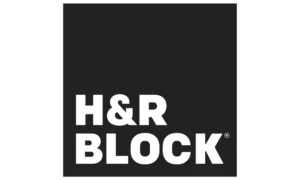









Strength In Numbers
Join The Companies Already Benefiting From TimeTrex
Time To Clock-In
Start your 30-day free trial!
Experience the Ultimate Workforce Solution and Revolutionize Your Business Today
- Eliminate Errors
- Simple & Easy To Use
- Real-time Reporting

Saving businesses time and money through better workforce management since 2003.
Copyright © 2025 TimeTrex. All Rights Reserved.



